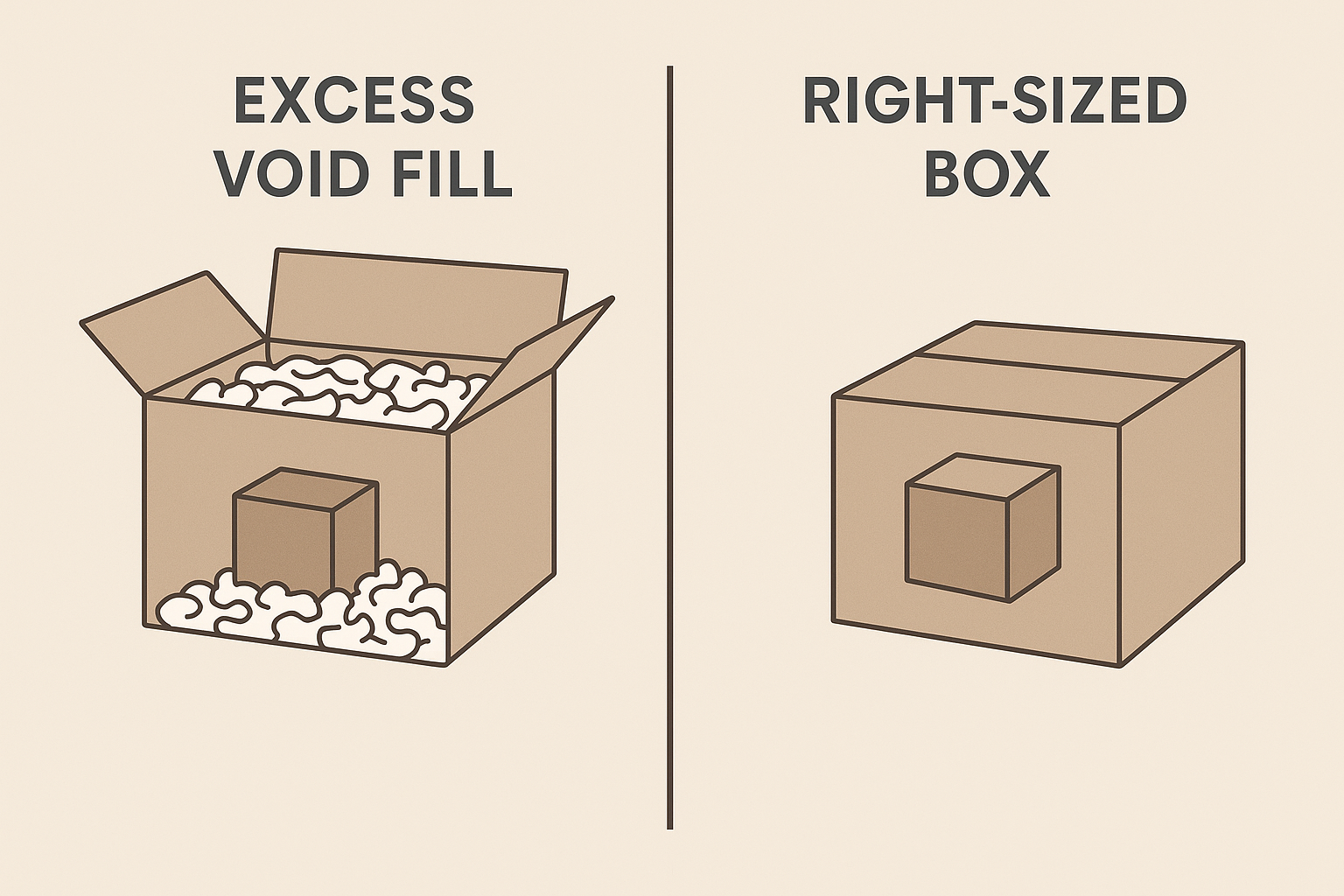Choosing the right shipping box is a precarious balance between your item, and the current DIM pricing, which can be a bit of a challenge.
DIM, or dimensional weight, is a specific type of packaging weighing system couriers use. This is the weight and pricing of an item, and is pitted against the actual weight of the item.

Why Dimensional Pricing is Used
A lot of times, dimensional weight is used to help curb wasteful shipping. With dimensional weight, the overall dimension of the package and product is something that’s factored. When the box is huge but the item weighs less, it eats up packaging costs, in comparison to just putting together the right type of box for the item.
Some people use the wrong box size and eat the dimensional weight costs because they are afraid of it getting wrecked, and this is an alternative to potentially breaking or damaging the item. But, while it seems like a good idea at the time, it ends up being wasteful because of how expensive it tends to be.
To calculate this, you multiply the dimensions of the box and then divide it by the carrier weight divisor, which means that you’re able to put together a product or packaging that’s specific for the carrier’s needs.
The type of packaging and excess void fill plays a role in this, which is why you need to play a game of precarious weight balance if you plan on doing this.

The Balance Between Box Size and Filler Material
You want to put together the right balance between the size of the box, and the filler material.
If you’re using a huge box to add in excess void fill, it’s going to rack up heavy costs when you get to the post office. On the flip side, a small box with no padding whatsoever might save you in terms of dimensional weight, but it also poses the risk of it getting destroyed the second it gets to the customer’s home, or even on the way. Even if you throw fragile things there, there’s no guarantee it won’t be ruined.
Putting together the appropriate box size and filler material is important. Using some filler material that fits the box, rather than just crowding a box, is good. Air pillows are a good idea, but they tend to cost a lot more, since you need a larger box. Foam, packing peanuts, or corrugated dividers all work great to help with the right material balance.
As a rule of thumb, there should be about an inch between the item and void space, perhaps less, so be mindful when choosing boxes.
Read the Carrier Guidelines
As always, you should consult the carrier guidelines, especially when choosing oversized packaging. Most of the time, the carrier will have some input in place to help with this type of packaging.

If your item cannot fit the carrier guidelines, it might be charged as oversized. This ends up eating major costs for you, so it might not be the right decision or idea.
If you’re in doubt, talk to the carrier directly by going out and speaking to them, and from there, find out more about how to optimize this effectively. You’d be surprised at the difference this ends up making, and the result of such efforts it might have on you, so be mindful of this, and try to as well improve the packaging that you have, in order to ensure that you have the ideal packaging experience that you can have.